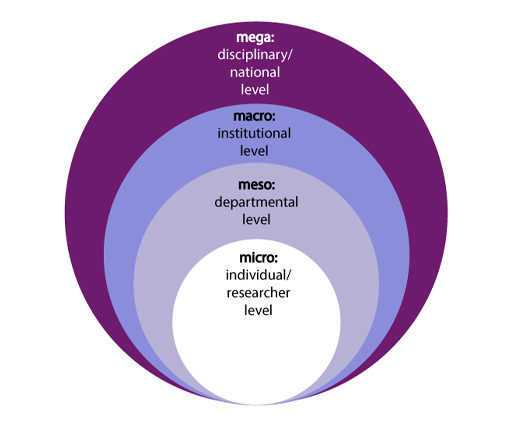2 The impact of SoTL
SoTL is a growing area in which educators investigate their teaching and their students’ learning, and share the results with others. Over the last two decades, SoTL has contributed to enhancing the learning and teaching in higher education (HE). There is a greater adoption of educational technologies and analytics in HE over the last decade, and SoTL practice has been adapting to these emerging trends in HE.
Given that SoTL as a field is maturing and is becoming more visible through dissemination, it has the potential to make a much greater impact on the quality of curriculum and pedagogical practices, and on the adoption of emerging educational technologies in diverse disciplinary contexts than ever before.
The impact of SoTL implies demonstrable benefits that are directly attributable to a SoTL inquiry. This impact can be:
- improvement in student experience
- strengthening of student-staff collaborations through student partnership
- building or strengthening SoTL practitioner’s reflective practice
- contribution to teaching strategies in the discipline or subject area
- application of the outcomes of the SoTL inquiry in other disciplines and contexts
- changes in institutional processes and policies
- higher quality of learning and teaching at institutional, national and international levels.
The levels of impact can be classified using the 4M framework proposed by Simmons (2016), which have been demonstrated in Simmons (2020) and Pechenkina (2020). The 4M framework (Figure 1) has micro-meso-macro-mega levels, where micro refers to an individual level of impact (at a researcher level), meso (at departmental level), macro (at an institutional level) and mega (at a disciplinary or national level).
Note that it is not necessary for every SoTL inquiry to aim for all possible levels of impact. An inquiry with an impact within one aspect of a module – for example, increased engagement with group work – can be equally significant as an inquiry that realises benefits at faculty or institutional level.
Also note that sometimes it is only the ethos of a SoTL inquiry in one context that is transferred to another discipline and context. A complete transferability of a SoTL initiative may not always be possible since student profiles such as background and skills, the learning and teaching contexts, the subject area and study pathways will guide the adaptation of a successful SoTL initiative in a new context.
Not every SoTL inquiry is expected to have an impact beyond their local context. Similarly, the scale of a SoTL inquiry doesn’t determine the level of impact. Even a small-scale inquiry can lead to impact at national and international levels. Whatever the scope and scale of SoTL practice, its purpose is to strengthen the learning experience of students. The important aspect is that a SoTL inquiry is conceptualised and planned with some possible impact in mind.
Activity 5 SoTL: Microscopic and macroscopic effects of SoTL
As you are watching the following 2 minutes 6 seconds video, make a note of the key points that Gary Poole of The University of British Columbia, is making about microscopic and macroscopic effects of SoTL.

Transcript: Video 3 SoTL: Microscopic vs. macroscopic
Discussion
Gary mentions that SoTL research is sometimes perceived and even criticised to be primarily ‘microscopic’, which is too focused on in-class experiences and which may not have the potential to have an impact in higher education. However, Gary argues that when several microscopic explorations of SoTL are compiled, the combined effect provides a bigger picture and can result in impact at various levels. Further, Gary says that the idea that SoTL conducted at microscopic level (such as at a local context) will have less impact is wrong.
Even a small-scale inquiry at a local context can lead to significant impact, as demonstrated by the case study in the next section.

